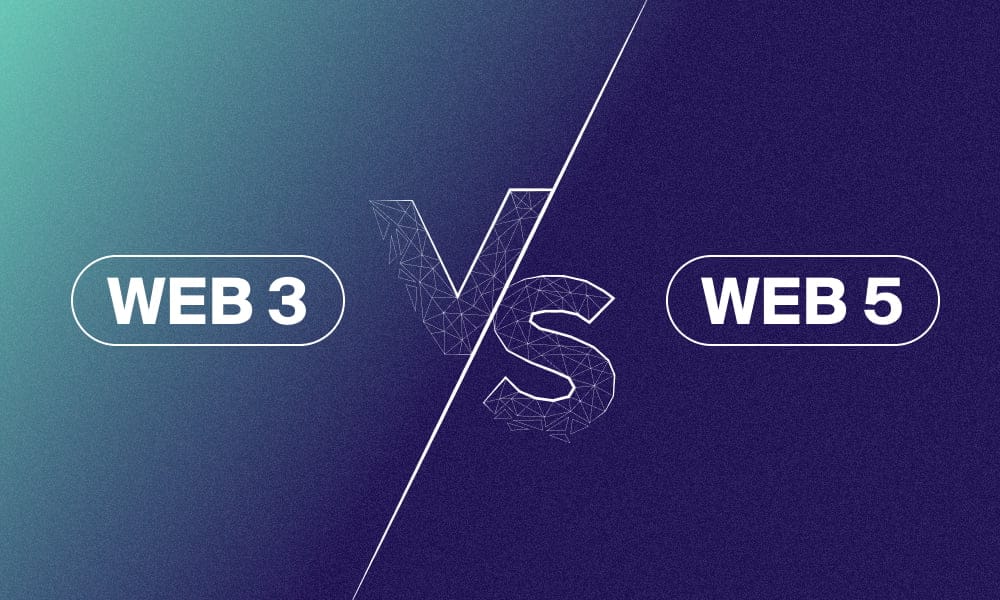
What is Web3 vs Web5?
The evolution of the internet has seen distinct phases, each bringing new functionalities and shaping how we interact online. Web3 and Web5 represent two advanced concepts in this evolution, both aiming to enhance user autonomy, data ownership, and decentralization. However, they differ fundamentally in their approaches and underlying technologies.
Understanding Web3
Web3, often referred to as the "decentralized web," builds on the concept of decentralization using blockchain technology. It aims to give users greater control over their data and digital identities by removing intermediaries and centralized authorities from online interactions. Here are some key features of Web3:
Key Features of Web3
1. Blockchain Integration
Web3 relies heavily on blockchain technology, where transactions and data are stored across distributed ledgers. This ensures transparency, security, and immutability of data.
2. Decentralized Applications (dApps)
Web3 enables the creation of decentralized applications, or dApps, that operate without a central authority. These apps allow users to interact directly with each other, often through smart contracts, which are self-executing contracts with the terms directly written into code.
3. Enhanced User Privacy and Control
In Web3, users have more control over their personal data, which is often stored on decentralized networks rather than in centralized databases. This reduces the risk of data breaches and gives users greater autonomy.
Limitations of Web3
Despite its advancements, Web3 has faced criticism for not achieving full decentralization. Critics argue that many Web3 projects are still controlled by a small number of stakeholders, such as venture capitalists and large investors, which contradicts the ethos of decentralization.
Introduction to Web5
Web5, a concept introduced by Jack Dorsey’s TBD group, aims to address some of the shortcomings of Web3 by pushing the boundaries of decentralization even further. It envisions a truly user-controlled internet where individuals have complete ownership of their data without relying on third parties.
Key Features of Web5
1. Decentralized Identifiers (DIDs)
Web5 introduces Decentralized Identifiers (DIDs), which allow users to create and manage their digital identities independently of any centralized authority. This means users control how their personal information is used and shared across different platforms.
2. Decentralized Web Nodes (DWNs)
DWNs are a core component of Web5, functioning as user-controlled data storage and communication nodes. Unlike centralized servers, DWNs allow users to store their data in a decentralized manner, giving them full control over who can access their information.
3. Self-Sovereign Identity
Web5 emphasizes the concept of self-sovereign identity, where users have full control over their digital identities without the need for third-party verification. This stands in contrast to Web3, where identity is often tied to blockchain wallets or other intermediaries.
What is Web3 vs Web5?
1. Decentralization
While both Web3 and Web5 aim for decentralization, Web5 goes a step further by removing reliance on intermediaries completely. Web3’s decentralization is often criticized for still being influenced by central entities like venture capitalists, whereas Web5 aspires to achieve a truly user-controlled environment.
2. Data Ownership
In Web3, data is often stored on the blockchain or within decentralized applications. Web5, however, proposes a more radical approach where users’ data is stored in decentralized nodes that they fully control. This eliminates the need for any centralized service provider to manage or store data.
3. User Experience
Web5 is designed to offer a seamless user experience with enhanced privacy and security. It focuses on creating a web where users can navigate between applications and services without compromising their control over personal data. Web3, on the other hand, still requires users to engage with blockchain technology, which can be complex and unintuitive for the average user.
Conclusion
Both Web3 and Web5 are significant steps forward in the evolution of the internet, aiming to decentralize control and empower users. Web3 has laid the groundwork with blockchain and dApps, but Web5 seeks to refine and extend these concepts, potentially offering a more complete realization of a user-controlled internet. As Web5 is still in its early stages, it remains to be seen how it will develop and whether it will fulfill its ambitious goals.



